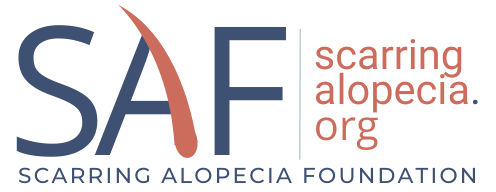6 Things to Know About Cicatricial Alopecia
- Scarring or Cicatricial (pronounced sick ah trish ul) Alopecia is a diverse group of rare disorders that destroy the hair follicle, replace it with scar tissue, and cause permanent hair loss. It affects otherwise healthy men and women of all ages, is not contagious, not hereditary and is seen worldwide.
- There is no known cause nor cure. However, all types of scarring alopecia involve inflammation directed at the hair follicle, usually the middle part of the follicle where the stem cells and sebaceous gland (oil gland) are located. If the stem cells and sebaceous glands are destroyed, there is little possibility for regeneration of the hair follicle, thus causing permanent hair loss.
- It is very difficult to predict the clinical path of scarring alopecia. For some patients, hair loss may be progress slowly over many years, and go unnoticed for long periods. Others may experience more rapidly progressing hair loss. Some people may experience symptoms like itching, tenderness, pustules and scaling and others do not.
- A scalp biopsy is the first step in diagnosing scarring alopecia. Findings from this biopsy, including the type, location and amount of inflammation are necessary to identify the type of scarring alopecia, the degree of activity and determining the next steps. There are treatments available for scarring alopecia, like topical and oral medication. However, the effectiveness of these treatments may be different from one person to the next.
- In addition to physical hair loss, many patients with scarring alopecia experience emotional side effects from this diagnosis. There are many resources available through SAF to help you cope and navigate emotionally through your diagnosis.
If you have been newly diagnosed, SAF is here to help.

